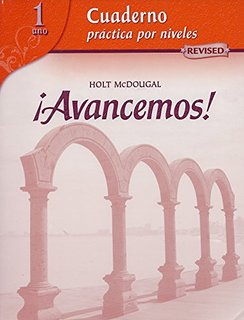
All Solutions
Page 170: Cultura C
Reading with comprehension.
In this exercise, there is a set of six incomplete sentences. You will read them carefully and refer to cultural texts on pages 190-191 and 203 in your manual. You will complete the sentences by using the appropriate terms in English. You may refer to the below solutions for further guidance.
In Spain, there are several languages and dialects spoken. Regarding languages, Castillian (the language you are learning), Catalan and Galician are Romance languages. Galician is a Lusophone language, which means it is related to Portuguese.
Catalan is spoken in Catalonia, parts of Aragon, the Valencian Community and the Balearic islands. Each region has its own variety of the language. Catalan is the only official language of Andorra and it was once spoken in southern France, around Perpignan, which was at the time part of the Catalan Countries (Països Catalans).
Basque, on the other hand, is a rather unknown language when it comes to linguistic genealogy. It is absolutely unrelated to any other European language. It is spoken in the Basque Country and parts of Navarra in Spain, and the Basque Country in France.
The Spanish government is currently discussing the status of Asturian, which is a Romance language spoken in Asturias and around León. There are already radio and TV programmes in Asturian, as well as magazines and other content. Teachers may teach and politicians may give speeches in Asturian if they speak the language at a native level.
2. Castilian, Catalan, Galician and Basque
3. Salvador Dalí
4. Madrid
5. dish
6. Feria de Abril
Reading with comprehension.
In this exercise, there are three questions about Spain. You will read them carefully and respond in full sentences. You will find all the relevant information on pages 191, 203 and 206 in your manual. Given the small variety of adecuate answers, only use the below examples as a reference.
1. En julio, en España hace calor porque es verano.
2. Cuando juegan contra Barcelona, los hinchas del Real Madrid cantan “¡Hala, Madrid!”.
3. Algunos rasgos del arte surrealista son motivos de la imaginación o de los sueños del autor.
|–|–|
|It is not incredible what my eyes see: | |
|it is snowing over a blooming almond tree | |
|it is snowing over snow. | |
|This winter my spirit | |
|is like an early spring, | |
|it is like a blooming almond tree | |
|under snow. | |
The poet says there is snow over almond trees, which means that winter really did come late, as it says in the title.
|–|–|
|It is too cold | |
|in the world this afternoon. | |
|But I open the door for my dog | |
|and with him, warmth enters the house, | |
|humanity enters. | |
I think the poet used the almond tree to refer to humans who cannot connect to other humans because they are under snow. Snow symbolizes some impediment or an obstacle.
The poet craves human interaction, but since humans are “under snow,” he lets his dog into his house to have some interaction with living creatures until the snow melts and spring comes.

